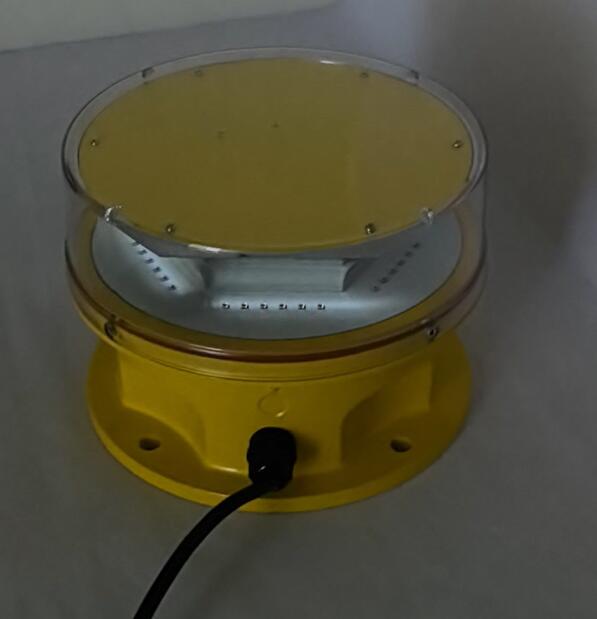Posted: 2025-02-10
In the vast and complex world of aviation, ensuring the safety of aircraft during takeoff, flight, and landing is of utmost importance. Among the many elements contributing to this safety, obstruction lighting aviation plays a crucial and often under - appreciated role. These lights are not just simple illuminations; they are a vital part of the aviation infrastructure that helps prevent collisions between aircraft and tall structures.
The Significance of Obstruction Lighting in Aviation
Collision Prevention: The primary purpose of obstruction lighting aviation is to make tall structures, such as buildings, towers, and wind turbines, visible to pilots. In low - visibility conditions like fog, rain, or at night, these structures can pose a significant threat to aircraft. By providing clear visual cues, obstruction lights reduce the risk of mid - air collisions, which can have catastrophic consequences. For example, a skyscraper in a busy urban area with proper obstruction lighting can be easily identified by approaching aircraft, allowing pilots to adjust their flight paths accordingly.
Compliance with Regulations: Aviation authorities around the world have strict regulations regarding obstruction lighting. These regulations are in place to ensure the safety of all air traffic. Structures that exceed a certain height or are located in proximity to airports or flight paths are required to be equipped with appropriate obstruction lighting. This standardization ensures that pilots can rely on a consistent system of visual markers, regardless of their location.
Working Principles and Types of Obstruction Lighting
Strobe Lights: Strobe lights are a common type of obstruction lighting. They emit short, intense flashes of light at regular intervals. These high - intensity flashes can be seen from a long distance, making them effective in alerting pilots to the presence of an obstruction. Strobe lights are often used on tall communication towers and large buildings, as their bright and attention - grabbing flashes can penetrate through various weather conditions.

Steady - Burning Lights: Steady - burning lights, as the name implies, provide a continuous illumination. They are typically red in color, which is highly visible in low - light environments. These lights are used in combination with strobe lights on some structures. For example, on a bridge that spans a major flight path, steady - burning red lights may be installed along the edges, while strobe lights are placed at key points to enhance visibility.
Medium - Intensity and High - Intensity Lights: Depending on the height and location of the obstruction, different intensities of lights are used. Medium - intensity lights are suitable for structures of moderate height, while high - intensity lights are reserved for extremely tall structures, such as large wind turbines or very high - rise buildings. High - intensity lights can be seen from much farther distances and are designed to be visible even in bright sunlight.
Installation and Maintenance Standards
Location and Placement: The location and placement of obstruction lights are carefully determined. They must be installed in such a way that they are visible from all possible angles of approach by aircraft. For example, on a tower, lights are placed at the top, middle, and base to ensure 360 - degree visibility. In addition, the spacing between lights is also regulated to provide a consistent visual pattern.
Maintenance and Testing: Regular maintenance and testing of obstruction lights are essential. Malfunctioning lights can lead to dangerous situations. Maintenance includes checking for bulb failures, ensuring proper alignment, and testing the electrical systems. Many modern obstruction lighting systems are equipped with monitoring devices that can detect faults and alert maintenance crews immediately.
| obstruction lighting aviation |
| obstruction light aviation |
Challenges and Future Developments
Technological Advancements: As aviation technology continues to evolve, there is a need for more advanced obstruction lighting systems. For example, the development of smart lighting systems that can adjust their intensity and flash patterns based on the weather conditions and the presence of aircraft is underway. These systems can optimize energy consumption while maintaining maximum visibility.
Integration with Navigation Systems: There is also a trend towards integrating obstruction lighting with aircraft navigation systems. This would allow for more precise detection of obstacles and provide real - time information to pilots, further enhancing flight safety.
In conclusion, obstruction lighting aviation is a critical component of the aviation safety network. It serves as a silent guardian, guiding aircraft safely through the skies and preventing potential disasters. As technology progresses and the aviation industry grows, the importance of obstruction lighting will only increase. By adhering to strict standards and embracing new technologies, we can ensure that our skies remain safe for all who travel through them.